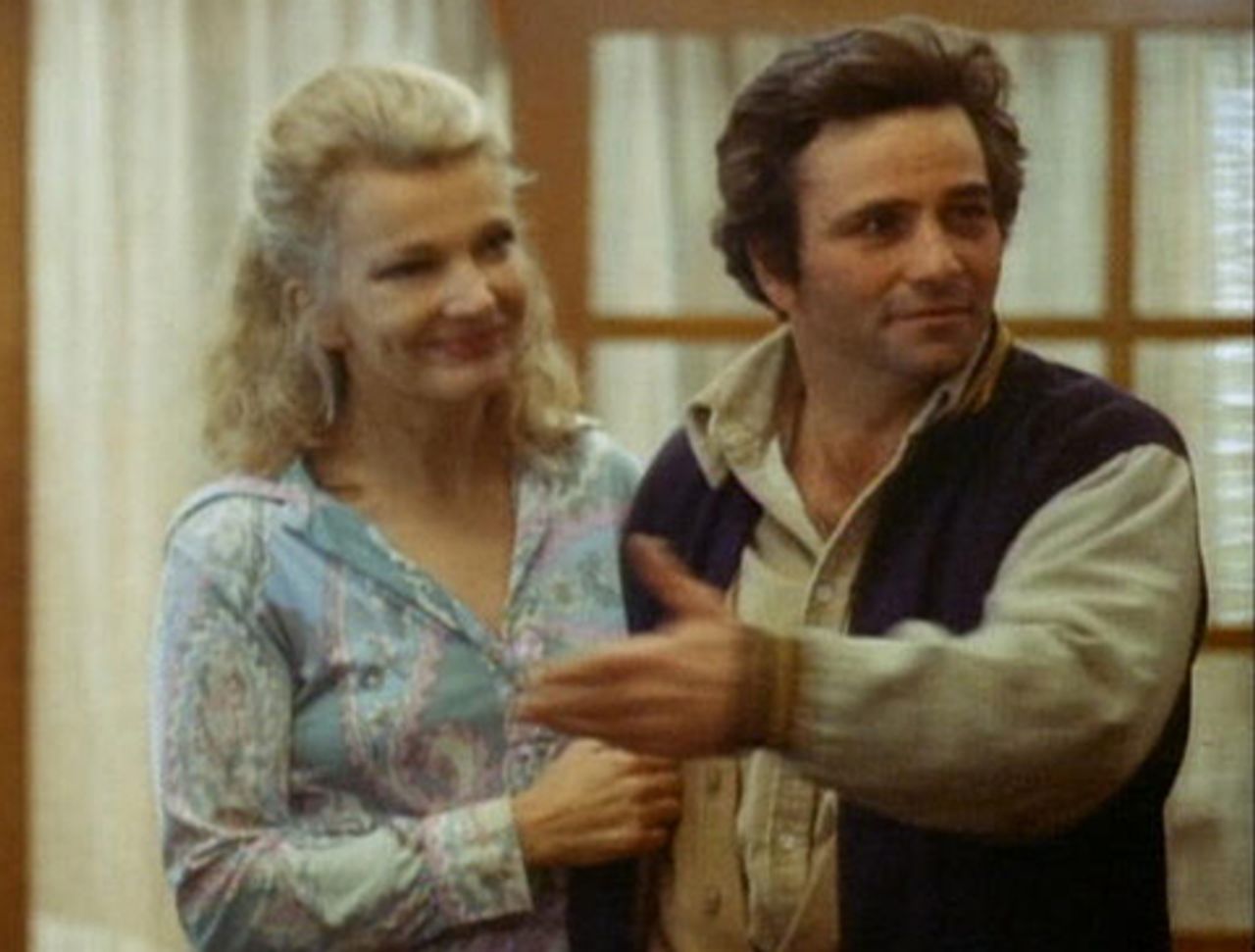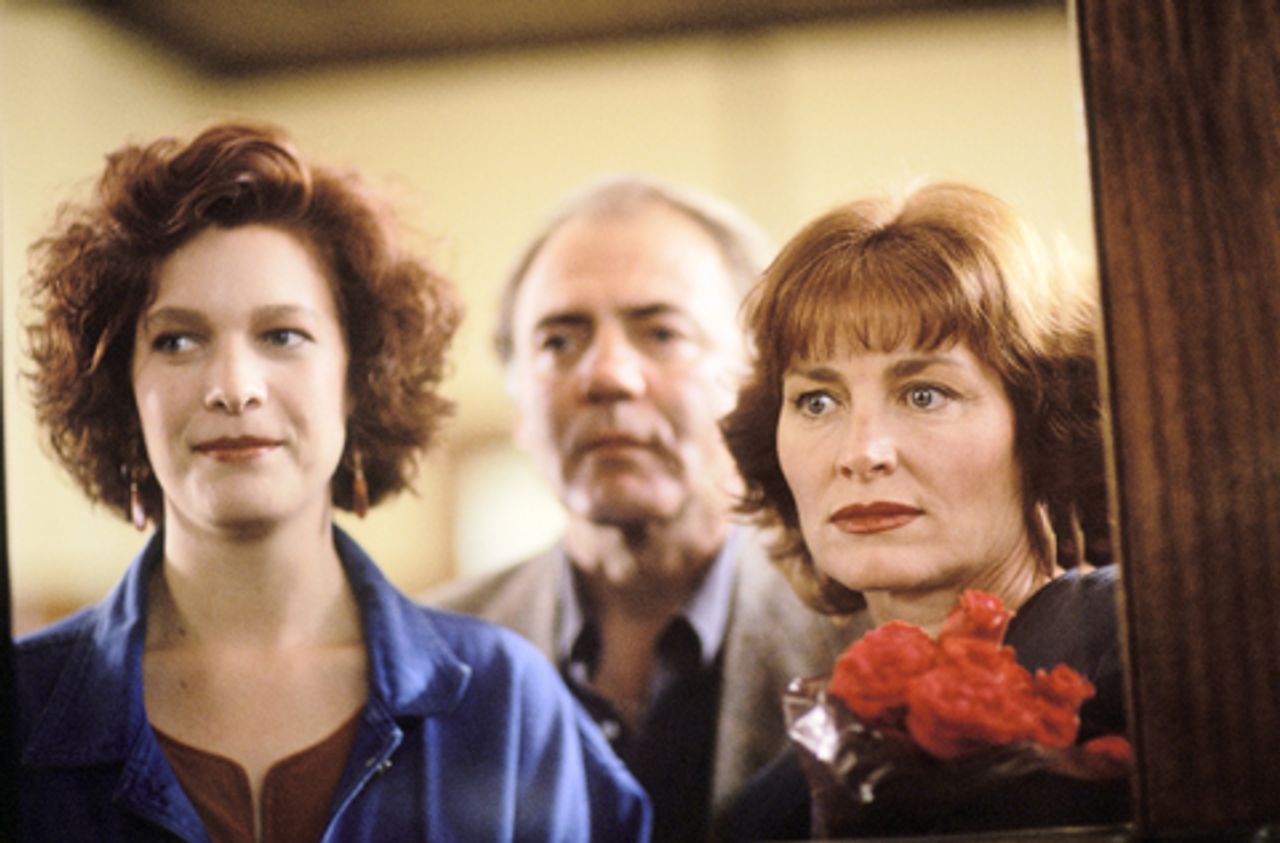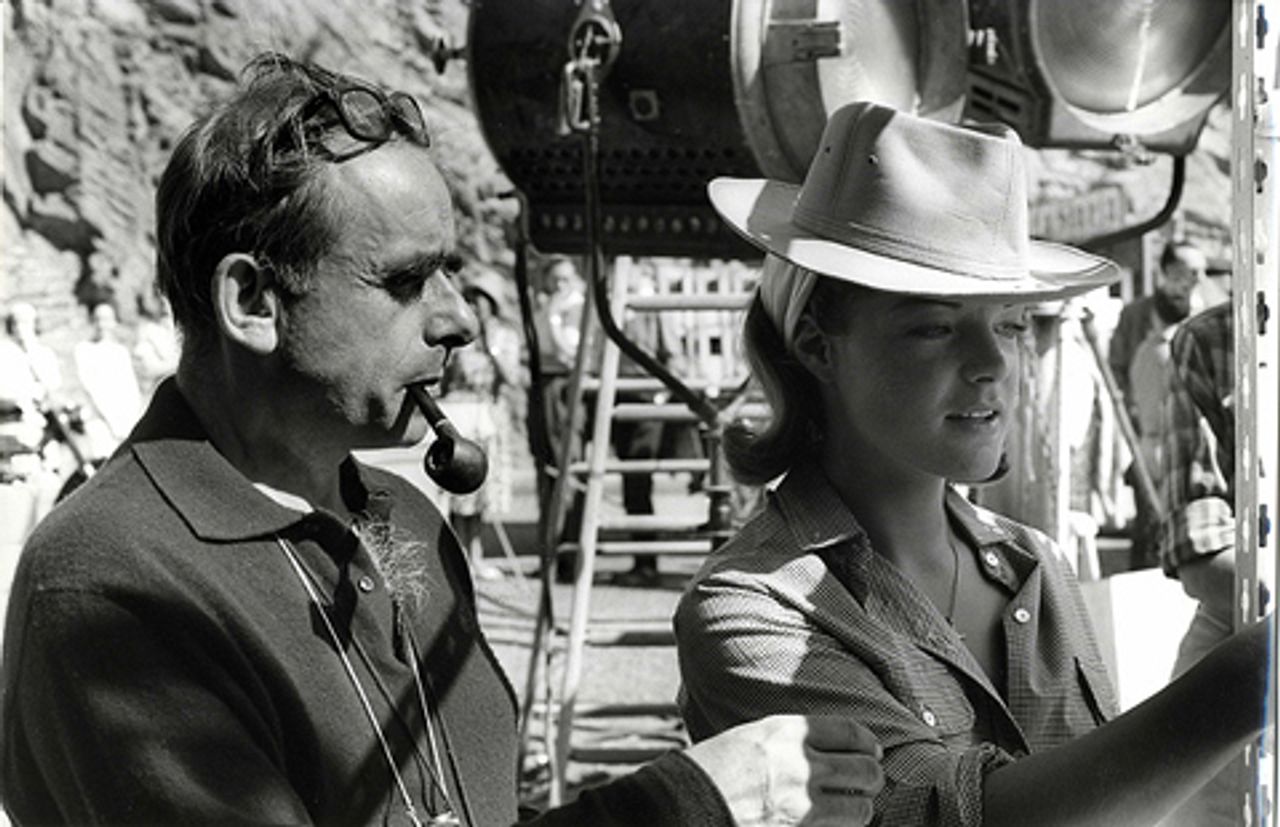This is the sixth and concluding article on the 57th Sydney Film Festival. See: Parts 1, 2, 3, 4 and 5.
This year’s festival screened two recent restorations—A Woman Under the Influence (1974) and The Last Days of Chez Nous (1992)—and a documentary about the Inferno, an aborted 1964 feature by French director Henri-Georges Clouzot. All three movies, including Clouzot’s failed project, are about marriages in crisis.
A Woman Under the Influence
 John Cassavetes
John CassavetesGreek-American writer, director and actor John Cassavetes (1929-1989) was a pioneer of independent American cinema and a passionate proponent of improvisational acting and a type of fictional cinéma vérité. A Woman Under the Influence, which was released in 1974 and examines the complex and often painful relationship between a working-class husband and his wife, is rightly regarded as one his best films.
Cassavetes rejected big studio productions. He produced and distributed almost all his films, raising funds through friends and various television and movie acting jobs. Apart from appearing in a few of his own films, Cassavetes’ best-known acting work included The Dirty Dozen (1967) and Roman Polanski’s Rosemary’s Baby (1968).
As he once explained: “Films today show only a dream world and have lost touch with the way people really are ... In this country, people die emotionally at 21, maybe younger ... My responsibility as an artist is to help people get past 21 ... [My] films are a roadmap through emotional and intellectual terrain that provides a solution on how to save pain.”
Cassavetes made Shadows, his first feature in 1959, and followed that with Faces (1968), Husbands (1970), Minnie and Moskowitz (1971), A Woman Under the Influence (1974), The Killing of a Chinese Bookie (1976), Opening Night (1977), Gloria (1980) and Love Streams (1984). His last movie was Big Trouble in 1986, which was taken over by another director and re-edited without Cassavetes’ approval.
A Woman Under the Influence is about the explosive and contradictory relationship between Nick Longhetti (Peter Falk) and his wife Mabel (Gena Rowlands, Cassavetes’ wife). Its core is the pent-up frustration and underlying inability of the couple to fully express their love for each other.
 A Woman Under The Influence
A Woman Under The InfluenceNick, a road-gang worker, is a gregarious but controlling type. Deeply in love with Mabel, he is unable to articulate his emotions in the way Mabel, who is a housewife and raises their three children, longs for. Mabel is sensitive, intense and eccentric, and displays behaviour that alienates her from a society afraid of her uninhibited honesty. The movie traces Mabel’s increasing instability and her eventual breakdown.
Unable to understand or cope, Nick has Mabel committed to a mental institution, where she stays for six months. When she eventually returns home, things explode again at a family welcome-home gathering. Nick insists that she “must be herself” but she breaks down and tries to kill herself. Nick stops her and things calms down a little, but who knows for how long.
Cassavetes said A Woman Under the Influence was his attempt “to deal with the serious problems of a man and woman who are alienated from each other by their backgrounds. Ignorant of their problems yet totally in love.”
This is true to a certain extent, but Mabel is alienated not only from her husband but from society. Her day is spent waiting eagerly for her kids to arrive home from school. She wants more from life but feels trapped and misunderstood and unable to find a way of articulating this rationally, or at least conventionally.
Nick is torn by his love for Mabel’s guilelessness and intensity but unable to withstand various social pressures to conform, and takes it out on her. One gets the impression that everyone needs to be a little more like Mabel: child-like, affectionate, open-hearted, generous, uninhibited and with the ability and desire to dream and create.
Gena Rowlands, who is a revelation as Mabel, apparently asked Cassavetes to write a play for her exploring the struggle of women in contemporary society. After reading his script, she said it was so physically and psychologically demanding that she couldn’t last a week performing it on stage, and so Cassavetes turned it into a screenplay.
Cassavetes had real empathy for ordinary people and produced a generally compelling, although uneven, series of movies. His determination to plumb his characters’ souls gave rise to larger-than-life characters and often some brilliant work. But his heavy improvisational, almost spontaneist approach, also encouraged over-heated performances, unnecessarily extended and at times self-indulgent work.
A Woman Under the Influence is an important film with some indelible and at times deeply tragic moments. It is well-worth revisiting to experience its potent emotional power.
Australian New Wave
The Last Days of Chez Nous, directed by Gillian Armstrong from a script by Australian author Helen Garner, is set in Sydney in the late 1980s. Its central characters are Beth (Lisa Harrow), a partially successful writer, her husband JP (Bruno Ganz), Annie (Miranda Otto), Beth’s teenage daughter from a previous marriage, and Vicki (Kerry Fox), Beth’s younger sister.
 Vicki (Kerry Fox), JP (Bruno Granz) and Beth (Lisa Harrow)
Vicki (Kerry Fox), JP (Bruno Granz) and Beth (Lisa Harrow)The film, which unfortunately has not been given the international attention it deserves, opens with Vicki returning from Italy and moving into Beth and JP’s comfortable and unpretentious home in the inner western suburb of Glebe. Beth and JP’s marriage has been falling apart for some time—joyful moments between them are few and far between, and it’s been months since they made love. Beth is increasingly frustrated by JP, who is homesick for his native France and feels isolated. He longs for a child of his own and is becoming irritable and short-tempered. “You’re always too positive,” he tells Beth.
Beth decides to take a driving holiday in the Australian outback with her cantankerous father (Bill Hunter). Their relationship has always been prickly—he appears to disapprove of her writing career as a “waste of time”—but Beth is concerned about his failing health and hopes that the trip will somehow patch up their relationship.
While they’re away Vicki begins an affair with JP, which Beth learns about after she returns. There is the inevitable angry confrontation, the marriage falls apart and Vicki and JP move out. There’s no high drama about the breakup, but a sort of over-arching melancholy.
Annie asks her mother: “Shouldn’t you fight back? Isn’t that what we are supposed to do?” But Beth is not interested in prolonging the stress, and realises that her life must move on. The movie ends with Beth walking off to look for a local landmark, a place she was always been curious about, but has never bothered to investigate.
The Last Days of Chez Nous is not flawless, but it stands up well after nearly 30 years. Armstrong has a light touch and gives Garner’s simple dialogue and acute observations about fading love and personal relationships real life and succulence. Lisa Harrow’s performance as Beth is subtle and thoroughly convincing.
Beth’s conversations with her taciturn father, who doesn’t want to talk about his differences with his daughter, ring true. They are funny and frustrating in equal measure. “When did discussion ever get anyone anywhere? It’s just talk,” he bluntly tells Beth.
JP’s grumpiness about being in Australia is deftly handled by Armstrong and obviously resonates with every immigrant missing his or her homeland. When JP nevertheless decides to become a citizen, he is singularly unimpressed with the insipid Australian ceremony, which is watched over by a bland portrait of Queen Elizabeth II.
Armstrong is a talented director and her films are intelligent, honest and, unlike many younger contemporary Australian filmmakers, not provincial. No doubt the social and political climate when she began filmmaking in the late 1960s influenced her approach.
Armstrong made her first short film in 1968, which was followed by 11 other short movies before her first dramatic feature—My Brilliant Career—in 1978. Together with directors Philip Noyce, Bruce Beresford, Peter Weir, Fred Schepisi and George Miller, she was a part of the so-called Australian New Wave—the renaissance of Australian cinema between the early 1970s and the late 1980s. Armstrong has alternated between fictional and documentary films since 1978 and helped launch the careers of actors such as Judy Davis, Cate Blanchett and Sam Neill. Her best known features include Mrs. Soffel (1984), Little Women (1994), Oscar and Lucinda (1997), Charlotte Gray (2001) and Death Defying Acts (2007).
Armstrong is pigeon-holed by many film critics and academics as a “feminist director” because the key protagonists in most of her films are women. She rejects this, insisting that her principal concern as a filmmaker is exploring human relations and the development of complex and convincing characters. As she told the media recently, “I think those labels are incredibly sexist. Nobody calls Phillip Noyce a ‘male director’. There are plenty of male directors who make films only about men.”
Armstrong’s latest film—Love, Lust & Lies (2010)—is a 90-minute documentary that brings together her three-decade film study of three South Australian working class women, a project that began with her short 1970 documentary, Smokes and Lollies.
Love, Lust & Lies, which was not screened at this year’s film festival but has had some limited theatrical releases, is an interesting and humane exploration of the three women’s life experiences—from teenagers to grandmothers. Whatever the aim, the documentary is an effective demonstration that the principal division in society is not gender but social class.
Inferno—a classic that might have been
Henri-Georges Clouzot’s Inferno is about the collapse of a major dramatic feature by one of France’s most celebrated filmmakers. In fact, this fascinating 90-minute documentary by Serge Bromberg and Ruxandra Medrea, which weaves together photographs, original footage, interviews with surviving cast and crew, and script readings by contemporary actors, is a movie about what could have been.
An acclaimed director of thrillers, Clouzot (1907-1977) was regarded as “France’s Hitchcock” and best known for Le Corbeau (1943), Quai des Orfèvres (1947), The Wages of Fear (1953) and Diabolique (1954).
 Clouzot and Romy Schneider
Clouzot and Romy SchneiderAfter watching Italian director Federico Fellini’s 8½ in 1963, Clouzot was determined to write and direct his own visionary new drama. Its subject was the descent into madness by Marcel (Serge Reggiani), an obsessive husband, who believes that his beautiful wife Odette (Romy Schneider) is having affairs with other men in the village. The couple manages a tourist hotel somewhere in the south of France.
Clouzot quickly wrote a 300-page script and immediately began visual and audio experimentation. The script begins with Marcel standing, razor in hand, over his wife’s body and dramatises, via flashback, how his jealousy spirals into disturbing dreams, hallucinations and ultimately madness.
While the real world of Inferno was to be shot in black and white, Marcel’s delusions would be presented in colour and involved op-art and psychedelic patterns and other new visual techniques. The test footage so impressed financial backers that the director was given an unlimited budget and total artistic control.
Shooting began in the south of France, but after a few weeks of location work with three separate crews, the production collapsed. Clouzot was so immersed in visual experimentation that shooting schedules fell further and further behind, a problem worsened by Clouzot’s increasingly unreasonable demands on his cast, particularly Serge Reggiani, and his maddening concentration on secondary details.
Reggiani, no longer willing to put up with Clouzot’s obsessive behaviour, angrily quit the project. Clouzot attempted to find a replacement, but had a major heart attack and was hospitalised. The director did not make another film—La prisonnière, his last feature—until four years later and died in 1977, his beloved Inferno project unrealised.
Whether Clouzot’s special visuals would have effectively portrayed Marcel’s descent into madness will never be known. What is clear, however, is that the original footage used in Bromberg and Medrea’s documentary is striking—Clouzot shot 13 hours of film—and gives a tantalising indication of what Inferno could have been, had it been completed.
Concluded
